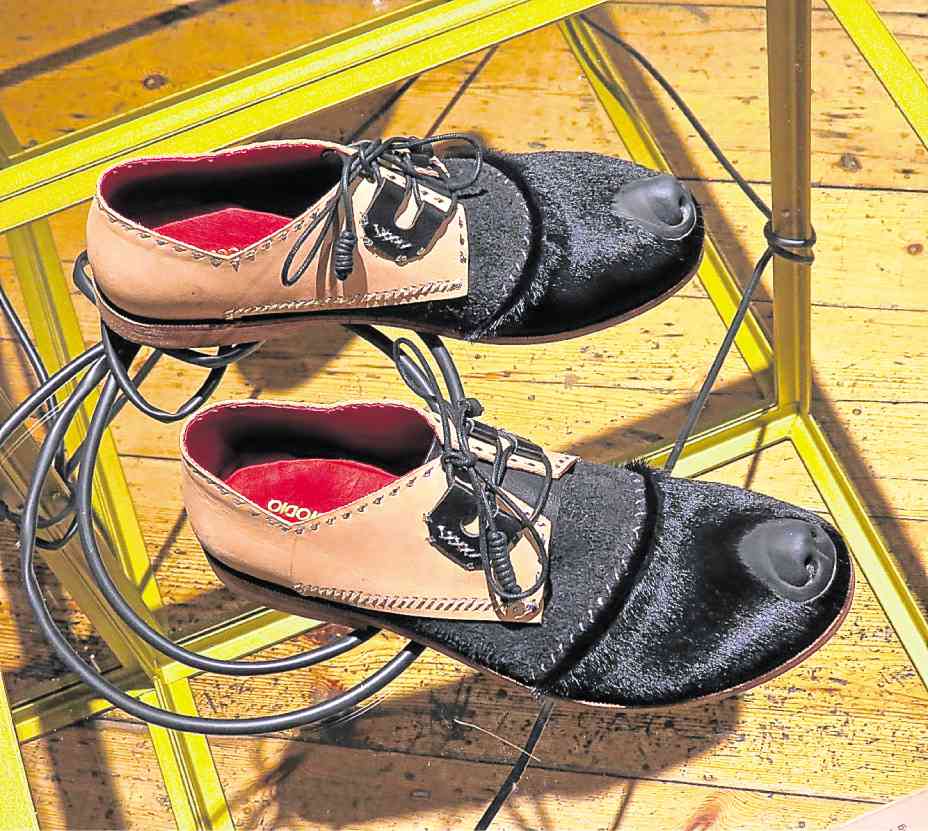Four young designers were selected by the Philippines’ Center for International Trade Expositions Missions (Citem) to represent the Philippines’ next-generation creative force in the London Fashion Showcase.
The 2016 edition of International Fashion Showcase (IFS) opened Feb. 18 at the British capital’s stately Somerset House.
It challenged all participants to think through the lens of utopia, in the spirit of the London-wide celebration of the 500th anniversary of the book of this title by Sir Thomas More.
Citem took up the challenge of presenting a fashion exhibition following this brief, by its careful selection of four young designers of noteworthy skill, and putting them under the guidance of veteran curators.
The designers work in footwear, jewelry and clothing.
They are Maco Custodio, whose family owns the footwear concern he is innovating on; second-generation jeweler Micki Olaguer; and self-taught, street-smart clothing designers Jarred Servando and Thian Rodriguez.
Each commands material and process with knowledge beyond their youthful years. And, as a group, they are, in the view of Citem, vital signs of a burgeoning fashion scene addressing young clients with a taste for the audacious statement.
Shoemaker
Challenged to think of the defeats, successes and other U-turns of utopian longing in the Philippines, Custodio thought to work with ideas of refiguring bodies torn asunder. As a footwear designer and manufacturer, after all, Custodio is familiar with leather—that is to say, skin and its reconstruction.
For IFS 2016, he took waste tetrabrick packaging, made them into bands for suturing excellent but waste (off-cuts of) leather, and thus fashioned shoes that elegantly summarize dismemberment and refiguration.
During his experimentation, Custodio extended this idea of reconnecting body parts in shoes by molding a latex nose off a dearly departed dog and incorporating the member in an act of literal re-membering.
That he can throw himself at such edgy projects is, to the exhibit curators, wholly supported by his consummate skill as a bespoke shoemaker.
Abaca
Servando chose to take up the material ubiquitous in his southern Philippine home province: the bast fiber abacá [Musa textilis Neé].
The toughest fiber in the world—used historically for ship cable through centuries of global maritime trade, and culturally for some of the finest ikat-dyed textiles in the world—is the material Servando wholly owns by sheer pluck at hand-wrangling it to conform to his ideas of glamour.
In his hands, the fiber retains its tough look without detracting from wearability and statement-making. Too, the fiber yields to his authority, as Servando yields to its natural tendencies to be stiff and prickly.
In homing in, so to speak, on this material, the beautifully tattooed Servando takes the stiff and prickly bits of homeland history and culture, and wrested wild beauty out of them.
Rodriguez was drawn into discussions during the predesign workshops led by the curators, particularly concerning the transformability of brass from ammunition to music-making gongs.
These kinds of pendulum swings between aggression and seduction captivated him, and directed him to leather design with metal grommets and bullet finials.
His mastery of enwrapping the human body in outlines that cling, served him thoroughly in his IFS-occasioned adventure into utopia/dystopia.
His IFS presentation, informed by evocations of pierced skin, plunged him into unfamiliar intellectual territory that he resolved ably with sheer craftsmanship.
Olaguer was led by the workshops into considering the utopian and dystopian stories in which gold and silver mining is embedded.
She detoured into dystopic mining practices that involve nefarious use of labor, and decided to juxtapose mother-of-pearl with silver in her IFS exhibit.
Mother-of-pearl has no known underside, indeed is a material that demands an absolutely pristine marine environment to prosper. Olaguer’s juxtaposition of the evocative mining panning pan shape and silver, with the “calming” mother-of-pearl became her resolution to the contradictions—rich in creative ideas—between utopia and dystopia.
The designers proved unafraid of difficult terrain in design. They were teased out of their youthful comfort zones by curators who for decades have regularly inhabited knife’s edge domains, and these youth learned quickly to walk that knife’s edge and come out on the other side with gritty, well-crafted fashion.
Citem’s choice of curators for IFS London 2016 is hence strategically vital: The choice meant that two generations are brought together in one exhibit. That older generation came out of avant-gardes in conceptual art and critical theory, and the young generation comes out of an emergent Philippine prosperity that nevertheless maintains an intimate knowledge of catastrophe.
Curators of IFS 2016 are the founders of Tao Inc, a museum and exhibition development corporation, this writer (the institutional critic and curator); and its adjunct curator Judy Freya Sibayan, academic and pioneering performance, installation and conceptual artist.
They worked on this project with the Philippines’ veteran culture and arts manager Glenda Puyat. The exhibit is provided with a Manila soundscape constructed as a score by Tao Inc adjunct curator, the public art coordinator Adrian Jones.









































